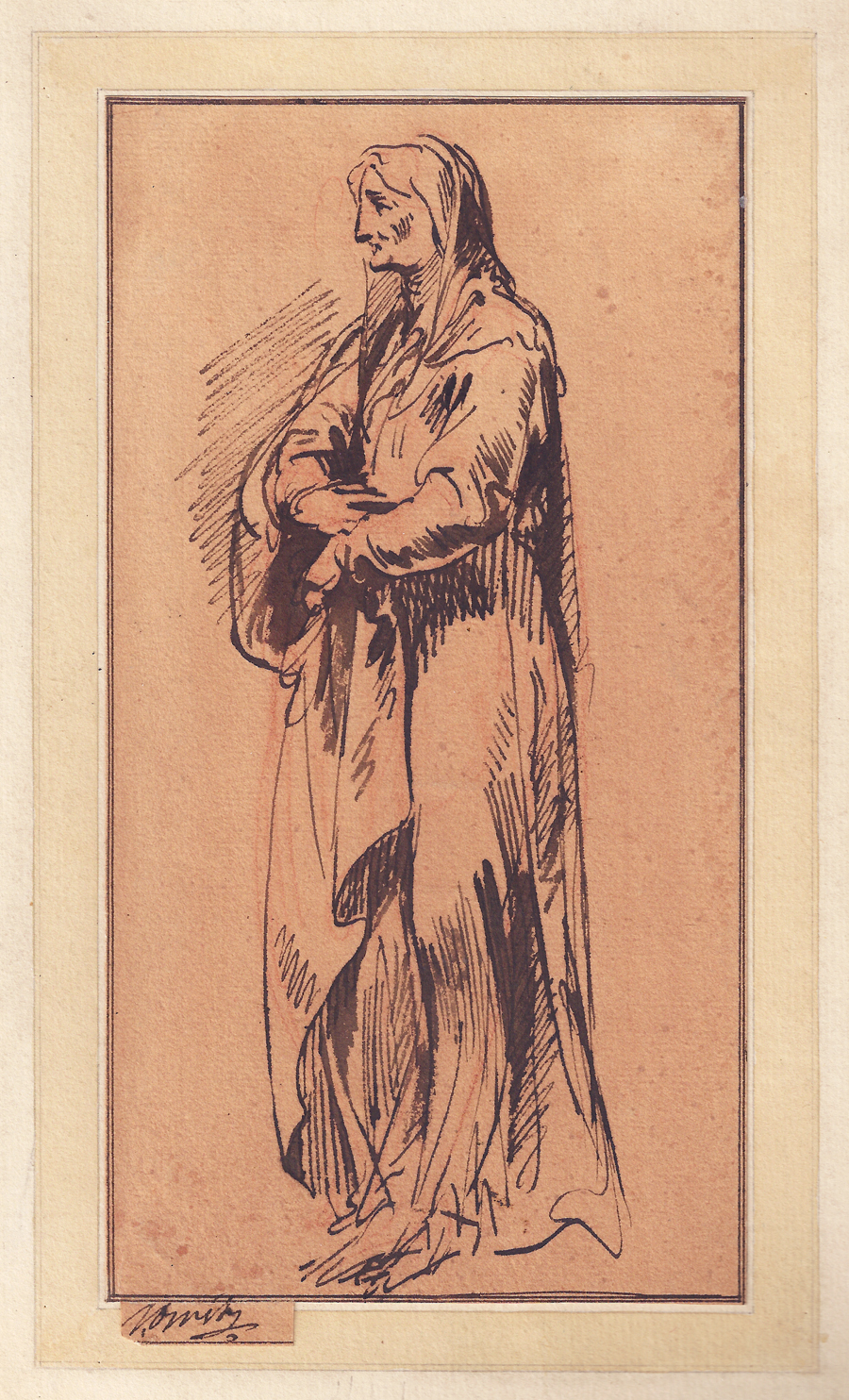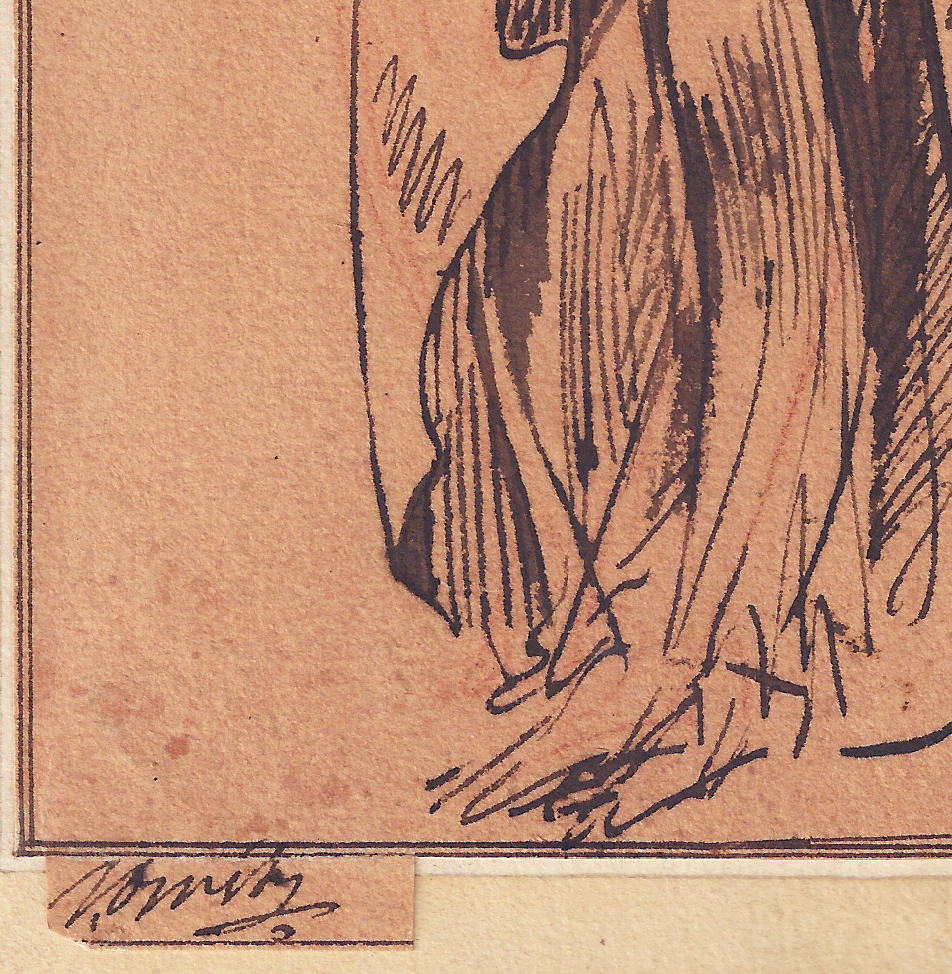JACOB DE WIT (Amsterdam 1695 – 1754 Amsterdam)
Jacob de Wit (Amsterdam 1695 – 1754 Amsterdam)
A Personification of Winter
Pen and brown ink, red chalk, brown ink framing lines, on paper washed light brown, 217 x 115 mm (8.5 x 4.5 inch)
Signed ‘JdWit’ (pen and brown ink, lower left); annotated ‘No 118’ in an early hand on the verso of the mount (pen and brown ink)
Provenance
~ Paul Brandt (1900–1984), Amsterdam, from whom purchased on 15 November 1927 for fl. 5 by:
~ Professor Johan Quirijn van Regteren Altena, Amsterdam (1899–1980), recorded in his inventory book ‘360. t. J. de Wit Staande vrouw’, until sold by his descendants in 2015 (his collector’s mark applied on the verso)
***
Jacob de Wit was born in Amsterdam and received his early training when he was only nine years old from the painter Albert Spiers.1 At the age of thirteen he left for Antwerp to study with Jacob van Hall and became an admirer of Rubens and Van Dyck. De Wit quickly developed into the leading decorative painter in Amsterdam. From 1717 on De Wit had so much work on his hands ‘that he scarcely knew were to begin’, according to the artist’s biographer Jacob van Gool in 1750.
One of De Wit’s specialties were grisaille paintings, giving the illusion of marble reliefs. These grisailles are known as ‘Witjes’, named after the artist to whom they had brought such fame. Many of the houses along the Herengracht and Keizersgracht canals of Amsterdam are still adorned with ceiling paintings and wall 'behangsels' by De Wit. Together with Cornelis Troost, De Wit is rightly considered among the most important and gifted artists of the Dutch eighteenth century, the Silver Age.
This powerful drawing of a standing woman, probably a personification of Winter, takes a special place in De Wit’s drawn oeuvre. Its strong and rather severe yet loose handling differs from his usual light and airy manner. It is strongly reminiscent of the drawings of Rembrandt, and maybe Rubens, active a century previously. Some other drawings in a comparable style by De Wit are known; our sheet may for instance be compared to a Deposition in the Amsterdam Museum (fig.).2 The Amsterdam drawing is dated early in De Wit’s career, in his Antwerp period, when he was deeply influenced by the drawings of Rubens and Van Dyck.
1. For the artist, see: A. Staring, Jacob de Wit: 1695–1754, Amsterdam 1958, J. Huisken, Jacob de Wit: de Amsteltitiaan, Amsterdam 1986 and G. van den Hout and R. Schillemans, Putti en Cherubijntjes: het religieuze werk van Jacob de Wit (1695–1754), Haarlem/Amsterdam 1995-96.
2. Pen and brown ink, black chalk, 226 x 339 mm; inv. no. A 10374 (formerly Amsterdams Historisch Museum); Ingrid Oud and Leonoor van Oosterzee, Oude tekeningen in het bezit avn het Amsterdams Historisch Museum, waaronder de collectie Fodor. Nederlandse tekenaars geboren tussen 1660 en 1745, Amsterdam/Zwolle 1999, cat. no. 191, p. 235, repr.



